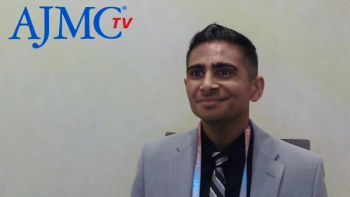
Understanding Pathways and Pathophysiologic Implications of Autophagy
Autophagy functions in numerous critical ways, including in quality control, cell remodeling, and energy production. Understanding the molecular pathways of autophagy can result in understanding and treating neurodegenerative disorders, metabolic disorders, and physiologic changes associated with aging.
Autophagy functions in numerous critical ways, including in quality control, cell remodeling, and energy production. Understanding the molecular pathways of autophagy can result in understanding and treating neurodegenerative disorders, metabolic disorders, and physiologic changes associated with aging.
Ana Maria Cuervo, MD, PhD, professor and co-director of the Einstein Institute for Aging Research from the Albert Einstein College of Medicine, discussed her work in selective autophagy at the 2014 American Society of Bone and Mineral Research Conference in Houston, Texas.
Autophagy is the pathway by which material in the cell gets degraded and renewed. Within that pathway, lysosomes are organelles that break down proteins, aggregates of protein, organelles and pathogens.
Dr Cuervo studies the morphological structure of autophagous pathways on a molecular level. Her analysis is made possible through the use of markers that allow scientists to evaluate physiological processes, such as aging, cell death, cell defense, and development/differentiation, and pathological processes, including cancer, metabolic disorders, neurodegeneration, and myopathies.
Autophagy functions in multiple cellular domains, including energy production, quality control (altered protein, altered organelles, and organelle homeostasis), defense, remodeling, and reprogramming. In bone, eliminating autophagy in essential genes leads to loss in bone mass and results in spontaneous fractures.
Traditionally, scientists who studied the role of autophagy in cell metabolism examined proteins as an energy source. Proteins in cytosomes can be delivered to lysosomes, leading to protein synthesis and energy formation. However, Dr Cuervo began wondering about the role of lipid autophagy in cell metabolism. Just like the body can break down protein for energy, it can sequester lipid droplets and break down triglycerides into free fatty acids to produce energy. Upon further study, Dr Cuervo found that eliminating autophagy led to lipid accumulation. The body’s inability to mobilize lipid stores in cells and difficulty mobilizing lipids for energy resulted in disease states and aging. Lipid accumulation changed the composition of autophagosomes, preventing fusion between compartments and leading to a vicious circle of increased lipid accumulation. Dr Cuervo postulated that a possible cause of the metabolic syndrome of aging may be that when autophagy decreases with age, it decreases lipid uptake, and lipid accumulation contributes to the destructive cycle.
In chaperone-mediated autophagy (CMA), all autophagous processes take place in the lysosome. In this pathway, the chaperone recognizes the protein that needs to be eliminated, brings it to the lysosomes, which then brings it into the CMA translocation complex. LAMP-2A is a key component of this pathway.
Metabolic diseases and neurodegenerative disorders (including Huntington’s disease, Alzheimer’s disease, and Parkinson’s disease) may be due to problems with CMA.
Dr Cuervo decided to study the effect of CMA malfunction in the aging process. She found that, while there were no changes in the chaperone or other metabolic enzymes, the amount of LAMP-2A protein decreases with age. So, she eliminated the LAMP-2 gene in the hepatocytes, full body, and brain of a mouse model.
Eliminating the CMA pathway in the liver resulted in liver damage and decreased liver function, but no accumulation of protein damage. However, the animals developed glycogen depletion and fatty liver, suggesting that enzymes were accumulating and causing abnormal gain of function.
Eliminating the CMA pathway in the brain altered motor coordination due to changes in protein homeostasis and proteotoxicity. It also appears that compensatory up-regulation does not occur in brain as it does in the liver.
Dr Cuervo noted that the “changes in one organ will have impact on the others”, and interactions between pathways is critically important in understanding their failure in aging. She said that the significance of her research is that ultimately, “it will be interesting to know the molecular basis of this pathway because it will give us therapeutic options.”
Newsletter
Stay ahead of policy, cost, and value—subscribe to AJMC for expert insights at the intersection of clinical care and health economics.















































